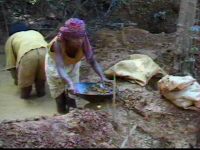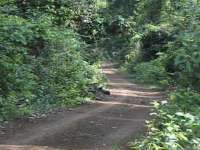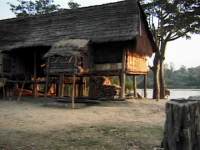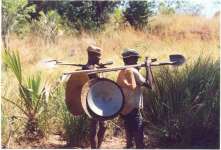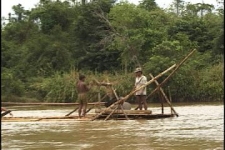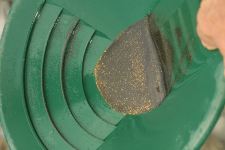![]()
By Dave McCracken
“Good organization always comes back to having some understanding in advance of what conditions you will encounter when it is time to complete the mission.”


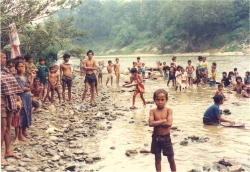
Assuming legal access to the property has already been arranged, and company executives intend for us to proceed in this way, here are the primary objectives that we try and accomplish during the preliminary evaluation of a potential mining project:
1) Meet with company executives to gain an understanding of what the mining program is about, what the overall objectives are, the timing and the budget. Review the information which they have accumulated so far. Make plans for a departure-date.
2) Obtain the very best maps of the area that we can get our hands on.
3) Locate and study as much information as we can find concerning the mining history of the area, and the areas surrounding where the project will take place. Plot this information on the map. This includes finding out the type of mining methods that were being used, and what kinds of values have been recovered.
4) Study background information about the geology, weather, culture, politics and economics of the area. This includes a look at the public information released by the U.S. State Department . Follow up with Internet research to see what others have to say about the people, events and mining activity within the area – and anything else of interest. 
Is the political situation stable?
5) Establish a preliminary idea of how and where the potential project-area is located in relation to local communities, potential sources of supplies, emergency support, political structure and access. Bring together an early idea of what we want to see when we get there.
6) I always recommend that at least one representative (preferably one of the company directors) of the company accompany us through the full preliminary evaluation of the area where the potential project would take place. It is in the company’s best interest to have someone from existing management present to confirm our observations, and to help evaluate our conclusions.
7) Travel to the potential project area and:
A) Get a feel for the local politics in general, and in relation to the potential project. Will the locals ignore, support or object to the program? Are there pre-existing problems that will need to be fixed before beginning a sampling program? For example, the following video segment shows local campaigning on political issues within Madagascar that soon thereafter evolved into civil strife that disrupted all productive activity in the country for at least 6 months:
B) Find out the different ways of gaining access to the project site. Try and make contact with those people who would provide the transport service (if needed), and establish timing, cost and dependability. How can we make contact with them from the field? For example, the following video segments demonstrate boat transport services we needed to rely upon to support a dredging project in Cambodia :
C) Locate sources of food, fuel, supplies and personnel to support the mining program. This would include any special needs, like local guides and boat operators out at the project-site. Establish the cost of things and dependability of the supply and/or services. Are there periodic shortages of supplies or services?
D) Locate the nearest place for competent medical assistance. Do they have any kind of emergency evacuation service? If not, perhaps they can provide a referral to the nearest large medical facility which does provide such a service. Develop a viable plan to provide competent medical care in the event that it may be needed, and how to mobilize the service from the field.
E) Establish support in local communities within the vicinity of where we would conduct the mining operations.
Click On Thumbnails To Enlarge
F) Locate local miners and gain as much information as possible from them about what is being done, where and what results are being accomplished. Purchase samples of the values if possible and carefully log where they came from. Take a hard look at the gold, gemstones or other values being recovered. It is important to verify the activity and results. Look at how much value the locals are recovering, in relation to the volume of their production. Relate that back to what can be accomplished in production with suction dredging or other modern equipment.
For example, the following video segment demonstrates a primitive hand-mining program that I stumbled upon along the border of western Viet Nam just a short while ago. These miners were breaking very small volumes of hard-rock ore free from the surrounding country rock with a hammer and chisel. The pieces of ore were being crushed by hand, and then surprising amounts of free gold were being panned in the river where we were sampling. While the amount of gold actually being recovered was not a lot, it was very rich compared to the very small amount of ore that was being processed by their primitive methods. Modern equipment and technology would turn this into an extremely valuable deposit:
The best local mining operations to observe are the ones that are actively processing the gravels within the waterway where our dredging would be done in a follow-up sampling operation.
For example, I captured the following video sequence where active gold mining was being done by local miners alongside and inside of the river where we were considering a suction dredge program in Africa several years ago. As the local miners were recovering a lot of gold in proportion to the volume of river gravels being processed, we decided that a follow-up dredge sampling program was justified:
G) Find out if there are special concerns about dangers in the water, within the surrounding area, sanitary problems, health concerns, or security worries. How will they be dealt with? Will there be any special needs for this?
For example, the following two video sequences were captured during a dredge sampling project that we completed in Cambodia several years ago at a time when there was an active (brutal) civil war in progress. The dangerous situation at the time required us to bring along a substantial contingent of security forces and also arm each of the specialists on our team:
Is the waterway full of big rocks that will require specialized equipment to winch out of our way?
H) Free-dive in the river and/or probe from the surface to gain a good perception of what equipment will be needed to perform a preliminary sampling program. How deep and fast is the water? How deep is the streambed material to bedrock? Is there a lot of material too large to move by hand? Are submerged trees going to interfere with the sampling process? Are there excessive amounts of mud or sand that will overwhelm the recovery system?
It is often possible to bring up smaller-sized samples to pan from the bottom of the river, to get a better idea what a dredge sampling program will find.
I) Decide if special recovery methods will be required to perform a preliminary sampling program. If conditions present will mean that more portable equipment will be required, this may require a floating container be constructed to fully catch the samples, so they can be carefully processed on shore.
Or it may be that you can refit your sampling dredge so that it will effectively capture the fine gold from your samples. Here is a substantial explanation of the system which we have developed to effectively recover more fine gold on our conventional suction dredges. It combines two classification screens to more-effectively separate material-feed into three size-fractions, each which is directed into a different recovery system. The smallest gold particles (which are most difficult to recover) are directed into low-profile riffles along the bottom of the sluice box which have long been proven to be very effective at trapping fine gold.


J) Establish the potential for a commercial mining opportunity, based upon evaluation of pre-existing information and direct observation of ongoing local mining programs, along with whatever limited sampling can be accomplished using the resources that are immediately available.
K) Document all important details as well as possible by logging names, phone numbers (or email addresses) and locations of important contact persons, along with how much things will cost. Obtain digital images of everything important..
L) If appropriate, conceptualize a preliminary sampling program. This includes how the sampling program would be performed, supported, and how long it would take to complete. The concept should be consistent with the company objectives and budget.
8) Write a report which includes all of the important details of our findings. Include a photo-library with explanations for each image. The report should conclude with a recommendation. For example, Here is an example of the non-proprietary portion of a completed Report.
For a better understanding of why a preliminary evaluation is so important, I strongly encourage you to read about some of the sampling projects that we have accomplished in remote locations outside of America. The full list of the adventures I have written about can be found here . When reading these stories, it should become very clear to you that the potential success of any sampling program will largely come back to how well it is organized in advance. Good organization always comes back to having some understanding in advance of what conditions you will encounter when it is time to complete the mission.
- Here is where you can buy a sample of natural gold.
- Here is where you can buy Gold Prospecting Equipment & Supplies.
- Logistical Planning
- Different Kinds of Sampling
- Prospecting for Gold in Hard-packed Streambeds
- Setting up the Proper Recovery System
- Production Gold Dredging
- Outfitting an Underwater Mining Project
- More About Sampling
- Adventures in Gold Mining
- Schedule of Events
- Books & Videos by Dave McCracken




